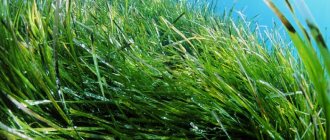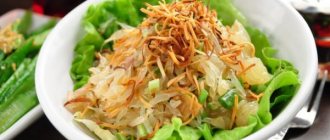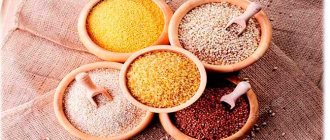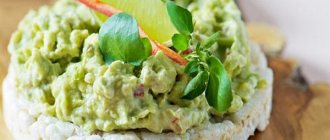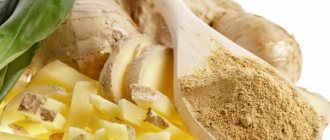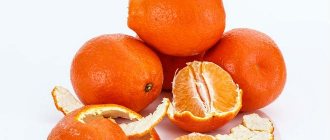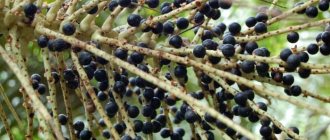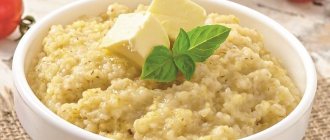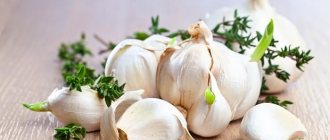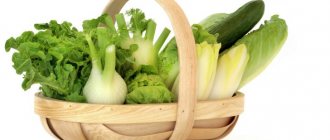Everyone knows that fruit consumption is a prerequisite for maintaining health. Such food saturates the body with essential vitamins, minerals, and microelements. Also, many fruits are rich in healthy fiber, which improves the functioning of the digestive system. But are all fruits equally healthy? The most popular and consumed fruit in the world is the banana. This fruit has long ceased to be exotic for our latitudes. Both adults and children love him. Some experts recommend including the product in your diet when losing weight. Is it so? After all, it is known that bananas are high in calories. What is the main benefit of bananas?
Brief description and history of the plant
Southeast Asia is considered the birthplace of these tropical fruits.
And now their wild ancestors are found there - small greenish fruits with large seeds. A little later, the plants were brought to Africa and America.
Modern bananas sold in stores are obtained by cultivating plants that grow in nature.
Banana plants are properly called grass because the shoots grow, produce flowers and fruit, and then die. Despite their gigantic growth (5-15 m), they do not have a woody stem.
Banana is a vegetable, fruit or berry
From the point of view of botanical scientists, a banana is a berry, since it is a small fruit of a plant that, by its characteristics, is a grass.
However, in everyday life it is considered to be a fruit, because the cultivated varieties sold in stores are more similar to it and have a sweet taste.
Where and how they grow
The main condition for the growth of this crop is a hot climate, so bananas are grown in countries located near the equator.
The banana plant has powerful roots and a stem on which huge leaves are located.
The clusters contain up to 300 fruit specimens.
The main suppliers of fruits are the countries of Latin America and Africa.
Varieties
All varieties of banana plants are divided into 3 groups:
- decorative;
- plantains;
- dessert.
Ornamental varieties are inedible, but they have beautiful flowers.
Plantains are fruits that require heat treatment. Only after this they are eaten.
Dessert fruits are those that can be eaten raw.
Growing banana
Since childhood, we are accustomed to thinking that banana grows on palm trees, but in fact it is a grass. The peculiarity of the plant is its size; the “blade of grass” grows up to 7-10 meters in height and has a thick trunk.
After the first year of growth, the trunk has 40-50 stems, on which white, pink or purple flowers bloom with nectar that attracts bees. Inflorescences grow in clusters according to gender characteristics - female, male and neuter separately.
When flowering ends, bunches of bananas are tied at the base. One pollinated flower produces 250-300 fruits! They are collected, hand-packed into boxes, labeled with the company name, and shipped all over the world. Bananas from Ecuador, China and India are especially popular in Ukraine.
How to grow a banana
If you plant a banana in open ground, in our climate the perennial herbaceous plant will freeze when the air temperature drops to 16°C. If you have a greenhouse or heated loggia, try growing bananas at home.
Growing Tips:
- choose seedlings of dwarf varieties: Musa Super Cavendish Dwarf or Musa Cavendish Dwarf, which grow no higher than 2 meters;
- Place the tub with a banana in the most illuminated place;
- regularly water the leaves and spray them with a spray bottle, the plant loves high air humidity;
- Apply fertilizer to the soil every 2 weeks and replant when roots emerge from the drainage holes.
On a note!
When the root system reaches a pot volume of 50 liters, the banana will begin to bear fruit.
Chemical composition of banana
The fruits contain a large amount of useful substances. Their composition is perfectly balanced and includes many antioxidants.
The chemical composition of banana is characterized by a high content of vitamins.
Vitamins
The high content of vitamins allows the fruit crop to be classified as a valuable food product.
Includes:
| Vitamins | Content per 100 g, mg | Daily requirement, mg |
| WITH | 8,7-10 | 60 |
| IN 1 | 0,05 | 1,5-2 |
| AT 2 | 0,05 | 2-2,5 |
| AT 6 | 0,4 | 2 |
| A | 0,07 | 5 |
| RR | 0,6 | 18-20 |
The leading role belongs to vitamin B6 (pyridoxine), because 2 fruits weighing 130 g cover the daily requirement for this substance.
Minerals
Fruits contain:
| Name | Content per 100 mg of product, mg | Daily requirement, mg |
| Potassium | 358-422 | 2500 |
| Magnesium | 27 | 400 |
| Sodium | 31 | 1300 |
| Calcium | 3 | 2500 |
| Iron | 0,3 | 10-18 |
Banana is among the foods with the highest content of potassium and magnesium.
The nutritional value
100 g of fruit contains:
- 2.1 g protein;
- 1.7 g fat;
- 23 g carbohydrates.
Does it contain starch?
The largest amount of starch is found in unripe fruits. As they ripen, it turns into sugar, so ripe fruit contains almost no starch.
Ripe fruits contain almost no starch.
Glycemic index
The glycemic index (GI) of banana fruits is 42-60, depending on the variety and degree of ripeness. It determines the amount of fast carbohydrates in the product. Their sugar content is taken as 100 conventional units.
How to choose bananas?
Today, bananas are presented in a wide range on supermarket shelves. But only high-quality, ripe fruits have benefits. That's why it's so important to know how to take the product correctly. There are even certain standards that are prescribed in the state standards. Thus, a top-class banana is 20 cm long, and the bunch contains at least 5-8 bananas. Therefore, the shorter the length, the lower the variety and quality of the fruit.
Bananas come in green, red and yellow colors, depending on the variety. The most common are the yellow fruits. Green layers are allowed on the surface of the yellow banana peel. These bananas ripen quickly at home at room temperature. But there should be no dark spots or inclusions. By following these simple rules of choice, you can improve your body’s health and saturate it with vitamins and minerals.
Banana calories
This is a medium-calorie product. Its nutritional value depends on the variety and ripeness of the fruit.
Fresh
On average, 100 g of fruit contains 90-95 kcal, and in some cases this value reaches 150.
Dried
The calorie content of dried fruits is even higher - on average 322 kilocalories per 100 g of product.
Fried
As a result of heat treatment, the sweetness of the fruit and its calorie content increase. Fried fruits have the highest nutritional value - about 400 kcal per 100 g.
Fried bananas increase their calorie content.
In small fruits
Sometimes small fruits are sweeter, so their calorie content is higher than that of large fruits.
But most often, small bananas, on the contrary, are inferior to larger fruits in both taste and calorie content.
How to select and store bananas
Bananas are collected unripe and transported at a temperature not exceeding 10°C so that they do not ripen on the road. That is why they are most often sold green in stores.
- If you want to eat bananas in 1-2 days, choose yellow fruits with black dots.
- To bring the fruit to ripeness, place it in a bag with apples, tie it and leave it overnight at room temperature. The ethylene released by fruits will make both apples and bananas ripen faster.
- Choose bananas with yellow skin without green spots on the stem; such fruits are sweeter and more aromatic.
- Do not store bananas in the refrigerator; at low temperatures, the peel will quickly turn black, but this will not affect the taste.
Advice!
When choosing bananas for baking or desserts, buy overripe fruits with small black spots, the sweetest ones with a soft center and a pronounced aroma. They are often sold at a 50% discount.
General beneficial properties of bananas
The usefulness of banana crops can hardly be overestimated. They have a beneficial effect on the body, help in the treatment and prevention of many diseases, and are used in cosmetics and household products.
For men
Bananas increase libido, restore hormonal levels and the ability to reproduce.
Bananas restore hormonal levels.
For women
By improving hormonal status with regular consumption of these fruits, women's ability to bear children increases.
They are indicated during pregnancy and premenstrual syndrome. The ability of bananas to increase serotonin levels in the body and improve mood is important during the menstrual and menopausal periods. This is of particular importance for women over 50 years of age, when hormonal changes lead to mood swings.
For children
An important argument in favor of eating bananas for children is their low allergenic activity. Since many children cannot eat other fruits due to this ailment, it is almost the only plant source of nutrients. Rare cases of allergies occur in those who react to chitin compounds and latex.
Children are not allergic to bananas.
An important property of these fruits is the absence of a negative effect on the child’s stomach and entire digestive system.
Which is healthier: green or yellow?
Green bananas have more calories than yellow ones. Their energy value is on average 137 kcal. Therefore, for those who want to lose weight, it is better to eat ripe fruits.
Ripe fruits contain more nutrients and are more easily absorbed by the body. Nutritionists recommend using yellow fruits.
The benefits of bananas for pregnant and nursing mothers
Most expectant mothers are attentive to their diet and select products based on their benefits to the body. Can pregnant women eat bananas? What are the benefits of bananas during pregnancy?
Many pregnant women suffer from heartburn, which is easily relieved by banana. It is enough to eat one fruit when discomfort appears, and soon the attack of heartburn will pass. Bananas are also useful during pregnancy because they contain a lot of ascorbic acid, which has a good effect on the immune system.
Folic acid is indicated for pregnant women, as it is very useful for the baby - it is found in bananas in sufficient quantities, both in dried and fresh fruits. The vitamins that make up these fruits can improve the condition and appearance of a pregnant woman and have a positive effect on the health of the unborn baby.
After the birth of a child, a reasonable question arises: can a nursing mother eat bananas? Will they cause discomfort in the newborn? Bananas can be consumed while breastfeeding, but in moderation. The best option is to eat one banana and see the child’s reaction after a while. If the baby does not experience constipation or loose stools, and the tummy does not hurt, then a nursing mother can eat no more than 1 fruit per day. Are you allergic to bananas? You should postpone the consumption of this delicacy until better times.
Health Benefits of Bananas
Due to its composition, this fruit crop has a lot of useful properties.
Contains valuable nutrients
These fruits contain large amounts of potassium and magnesium, which have a beneficial effect on the cardiovascular system. They contain a lot of ascorbic acid - 10 mg.
Bananas have a lot of potassium and magnesium.
They also contain B vitamins, which have a positive effect on the nervous system and help eliminate seizures.
Reduce blood sugar levels
American scientists have proven that eating bananas reduces blood sugar levels due to the presence of pectin in them.
Restore intestinal microflora
The fruit helps normalize intestinal microflora: it increases the number of beneficial bacteria due to its inulin content. Improving the biocenosis and the presence of plant fibers improve intestinal function and motility.
Bananas normalize intestinal microflora.
Reduce the risk of developing cardiovascular complications
Bananas strengthen the walls of blood vessels, making them more elastic. As a result, blood pressure decreases. This explains the reduced risk of strokes and other cardiovascular diseases. These fruits normalize the water-salt balance in the body, removing excess water.
Prevents degenerative brain pathologies
Since the fruits contain B vitamins, they help preserve cognitive abilities, memory, and thinking. The fruits slow down the aging process and promote active longevity; they are recommended for Alzheimer's and Parkinson's diseases.
Improve kidney health
Swedish scientists have found that eating bananas 2-3 times a week reduces the risk of kidney disease by 33%. American specialists conducted similar studies. According to them, eating fruit 4-6 times within 7 days reduces the likelihood of kidney disease by 2 times.
Bananas improve kidney health.
Have anti-cancer effects
The high content of vitamin C determines the anti-carcinogenic properties of bananas.
Eating these fruits inhibits free radical damage to cells. In addition, they contain a large number of antioxidants, the main of which is dopamine. Pectin, which is part of their composition, also has antitumor activity.
Prevent atherosclerosis
By strengthening the walls of blood vessels, banana fruits prevent the development of atherosclerosis. In addition, they contain phytosterols, which counteract the deposits of cholesterol plaques.
What beneficial properties are preserved in dried banana fruits and marshmallows?
They have the same elements as the fresh variety. Dried fruits contain beta-carotene, vitamins B, C, PP, A, E and K. They are also enriched with minerals: potassium, selenium, magnesium, fluorine, calcium, sodium, manganese, phosphorus, zinc and iron. They retain dietary fiber, organic and saturated acids. The benefits of dried bananas are that they improve brain function, normalize digestive processes and improve sleep. Marshmallow made from these dried fruits is no less useful.
In addition to normalizing digestion, the functioning of the heart and blood vessels, the delicacy has a positive effect on nerve cells, relieving depression and stress. All this manifests itself with moderate consumption of products.
Eating bananas
A large amount of useful substances opens up wide opportunities for consuming these fruits for food, as well as for therapeutic or preventive purposes.
Is it possible to eat on an empty stomach?
You should not eat fruits on an empty stomach, as there is a high risk of bloating. To avoid flatulence, nutritionists recommend eating a banana after meals.
It is recommended to eat a banana after meals.
In addition, eating these fruits on an empty stomach causes a sharp spike in blood sugar, which negatively affects health and leads to weight gain.
Daily norm
Nutritionists recommend that adults eat no more than 3 fruits a day, and children - 1. The maximum number of fruits eaten should not exceed 6 pieces.
in a day. Excesses are harmful to the body and can cause undesirable consequences - nausea, cardiovascular disorders, anemia, etc.
Features during pregnancy
Regular consumption of bananas during pregnancy reduces toxicosis and eliminates nausea.
In addition, the fruit contains folic acid, which is prescribed to pregnant women for the proper development of the fetus.
Do not drink it with water or milk to avoid heartburn.
How many bananas can you take per day?
In order not to harm your health, do not overdo it with this product. Doctors advise eating no more than three fruits a day. Moreover, it is better to do this not at once and not every day . This berry takes a long time to be absorbed in the body, so it is advisable to eat it for breakfast or an afternoon snack. It refers to food with a large number of kilocalories. Its regular consumption can lead to obesity. The best option is to combine such a product with other foods or diversify your diet (alternate the use of fresh fruits, dried fruits and desserts made from them).
Benefits of Eating Bananas at Night
It is generally accepted that eating at night makes you gain weight.
In fact, studies have shown that weight does not depend on the time of eating, but on the ratio of protein, fat and carbohydrates and calorie content. Bananas consumed at night will not only not lead to weight gain, but will also help you sleep and suppress your cravings for sweets and smoking, provided you follow the daily norm of KBJU.
Controlling sugar cravings
Some people can't sleep at night because they want to eat something sweet. In this case, eating the fruit will alleviate the condition.
Improved sleep
Subject to the daily requirement of KBZHU, bananas consumed at night will not only not lead to weight gain, but will also help you sleep. The tryptophan they contain promotes the body's production of melatonin, the sleep hormone. In addition, the magnesium contained in the composition helps to relax.
Bananas will help you sleep.
For people suffering from insomnia, nutritionists recommend eating 1 fruit an hour before bed.
Preventing Nutrient Deficiencies
It is convenient to eat a banana as a snack or when conditions do not allow for a heavy meal.
It saturates well and is convenient to use at work or on a trip. They can quickly replenish nutritional deficiencies after prolonged fasting or during heavy physical exertion. Thanks to the iron they contain, these fruits have a beneficial effect on blood composition, preventing anemia.
Increasing fiber intake
Bananas contain a large amount of fiber, pectin and dietary fiber. Their regular consumption increases the fiber content of food. This has a beneficial effect on gastrointestinal motility and allows the fruits to be used for ulcers and gastritis.
Bananas contain fiber.
Reducing the risk of kidney stones
Potassium is a calcium antagonist, the accumulation of which leads to the formation of kidney stones. Studies have shown that eating banana fruits 6 times a week reduces the risk of developing this disease due to the high potassium content in the fruits.
Cure Depression
Bananas contribute to the production of the so-called in the human body. “hormones of joy” - endorphins and serotonin, because contain tryptophan, which is converted into these substances. Thanks to this, they provide significant support in the treatment of depressive conditions.
Bananas contain endorphins and serotonin.
The release of endorphins leads to the fact that negative emotions dull and fear goes away.
Studies conducted by scientists have shown some improvement in the mood of patients and a decrease in anxiety.
Improved skin health
Consumed fruits improve the condition of the skin, moisturize it and promote cell regeneration, because... contain moisture and vitamin A.
Relief of PMS symptoms
Bananas reduce the acute manifestations of premenstrual syndrome, as they prevent bloating, remove excess fluid and improve sleep.
Bananas relieve PMS symptoms.
Accelerated recovery of the body after training
Banana is a source of easily digestible carbohydrates, so it is a quick energy booster due to the presence of sugars. It gives vigor and restores strength after workouts. This is a good replacement for protein bars.
Flaws
Although bananas have many health benefits, they are not for everyone.
Anyone watching their weight or blood sugar levels should not eat a lot of bananas.
Compared to berries, citrus fruits and kiwis, bananas are high in sugar and low in fiber. And fiber is needed to slow down the absorption of sugar into the bloodstream. It would be ideal to eat something that has a lot of sugar and carbohydrates and at least as much fiber, because there will be no sudden spikes and drops in blood sugar levels.
Berries are a perfect example of this combination of fiber and sugar; They have less sugar than fruits but are high in healthy antioxidants and fiber. For this reason, I recommend that diabetics, people with metabolic syndrome, or those wanting to lose weight eat low-sugar, high-fiber fruits and berries such as green apples, kiwis, and citrus fruits. They have a lower glycemic index than bananas, so they have a beneficial effect on blood glucose levels.
Research shows that unripe fruits have a lower glycemic index and sugar is absorbed more slowly. So if you want to keep your blood sugar levels stable, then choose green bananas. They contain more resistant starches, which the body digests more slowly.
If the choice is between packaged, processed and artificially-laden foods and bananas, choose the latter, even if you're trying to lose weight or have blood sugar problems.
Ripe bananas have fewer carbohydrates than most grain products, such as oatmeal, rice, and cereals. Compared to grains, by choosing bananas you will still consume fewer carbohydrates, sugars and calories and more nutrients.
Benefits and uses of banana peel
When consuming fruit peels, do not forget that to preserve the fruits, they are treated with chemicals. Before using the banana skin, it must be thoroughly washed and doused with boiling water. After this treatment, the peel can be used in the same way as the pulp, because it contains the same nutrients, plus plenty of fiber. Cocktails and smoothies are made from it, and used in baking.
In addition, the peel is a valuable fertilizer for the garden, vegetable garden or indoor plants. An infusion is made from it, which is used to water the ground.
You can put a piece of peel at the bottom of a pot with an indoor flower.
How bananas grow
The plant does not have a trunk - it is a herbaceous perennial 3–10 m high with a stem formed from the sheaths of large, entire leaves. On this false trunk an inflorescence grows, from which the infructescence is formed. Botanists call it a bunch, but non-specialists mistakenly consider it a bunch. One bunch contains 100 or more fruits collected in clusters. From a botanical point of view, these are berries, although outwardly they are not associated with them. They are oblong, slightly curved, approximately 20–30 cm long and tapered at both ends. The curvature of the fruits is explained by the fact that the initially vertically positioned fruit becomes very heavy over time and begins to sink towards the ground, while they themselves continue to grow towards the sun.
Banana diet for weight loss
Despite the fact that banana is a high-calorie food, it is used for weight loss.
Banana is used for weight loss.
In this case, the property of this fruit is used, such as the ability to quickly saturate and replenish energy. Due to the presence of hard-to-digest dietary fiber, it improves metabolism and removes excess fluid from the body, which promotes weight loss.
In addition, the fruit has a relatively low glycemic index, as a result of which it quickly saturates and suppresses the feeling of hunger for a long time. There is a mono-diet based on the use of these fruits. Its principle is to carry out fasting days, during which you are allowed to consume only 5 banana fruits and 3 tbsp. milk at intervals of 2 hours. You can drink another cup of kefir before bed.
The banana mono-diet is followed for 3 days. In the subsequent time, you should not pounce on food: you should eat in moderation at least until the end of the week.
Banana peel: benefit or harm?
Slipping on a banana peel is the biggest harm it can cause. Banana peels are not poisonous and are in fact full of nutrients and are edible. According to Flores, “In many parts of the world, banana peels are used for cooking, although this is not common in the West. It contains high amounts of vitamins B6 and B12, magnesium, calcium, fiber and protein.” An article was published in the journal Applied Biochemistry and Biotechnology in 2011, according to which banana peels, among other things, contain “various biologically active compounds, such as polyphenols, carotenoids and others.”
Before eating banana peels, you should wash them thoroughly, as various pesticides are often sprayed in banana groves.
Typically, banana peels are served cooked—boiled or fried—but are sometimes eaten raw or added to a blender with other fruits. It doesn't taste as sweet as the banana itself. The skin of the ripe fruit may be sweeter than the green skin.
Recipes for using banana fruits in cosmetology
The healthy fruit is widely used in cosmetology. It is used internally, and masks are made from the crushed pulp.
For face
Due to its high moisture content and vitamin A, ripe fruit pulp helps to moisturize the skin and smooth out fine wrinkles.
Banana helps smooth out fine wrinkles.
To whiten the face, use the following mask:
- banana puree - 2 tbsp;
- lemon juice - 1 tsp;
- sour cream - 2 tbsp.
The mixture is applied to the face for 15-20 minutes and then washed off with water.
To nourish the skin, you need to apply a mask of the following composition to your face:
- mashed fruit pulp - 2 tbsp;
- liquid honey - 1 tsp;
- sour cream - 1 tbsp.
For hair
Bananas are a good nutrient for hair restoration. For example, to add shine, apply a mixture of these fruits and 2 tbsp. sour cream first on the roots and then along the entire length of the hair.
Application in cosmetology
Many cosmetics concerns use banana as a raw material for the production of face, body and hair care products. It is easy to make masks and lotions at home.
Moisturizing mask with banana against acne
Mix ½ ripe banana with 1 tablespoon of unsweetened yogurt or sour cream, add 1 capsule of vitamin E and 1 teaspoon of bran. Mix, apply to face for 20 minutes, rinse with warm water and repeat 2 times a week.
Anti-wrinkle mask with banana peel
Using a spoon, carefully remove the pulp from the banana peel. Carefully break the chicken egg and separate the yolk. Mix in the pulp, stirring thoroughly with a fork. Apply to the neck and skin around the eyes, after 30 minutes, rinse with warm water.
Banana hair rinse
Mix 1 liter of warm water with ripe banana pieces and beat thoroughly with a blender. After shampooing, apply to hair, leave for 5 minutes and rinse.
Advice!
A banana mask helps with sunburn. Place the fruit in the freezer for 20 minutes, cool and beat with a blender or mash thoroughly with a fork. Apply to damaged areas of skin, leave for 30 minutes.
Use of bananas in medicine
The high content of nutrients, minerals and vitamins allows the fruit to be used as an adjuvant for the prevention and treatment of many diseases.
For diabetes
People suffering from diabetes should remember that the fruit is high in calories and contains a lot of sugar and starch. However, due to its ability to lower blood sugar levels and its relatively low glycemic index, it is recommended to include it in the diet of patients with diabetes, taking into account the kilocalories consumed.
Banana is recommended to be included in the diet of patients with diabetes.
For gastritis and stomach ulcers
For patients with ulcers or gastritis, banana is an indispensable fruit, because... it does not irritate the gastric mucosa. In addition, it promotes the production of enveloping mucus, thereby helping to cure these diseases.
For pancreatitis
For diseases of the pancreas, banana fruits are allowed, but in the form of purees, porridges, compotes in order to better digest the fruit.
If you have pancreatitis, you can eat bananas.
In folk medicine
Some folk methods:
- To treat cough: mash a banana with a fork and add a glass of milk. For those who tolerate honey normally, you can add it in the amount of 1 tsp. Boil everything for 15 minutes and take 1 tbsp every 2 hours.
- To eliminate bruises: apply the peel of the fruit to the bruised area with the inside and hold for as long as possible.
- To treat joint pain: infuse the skins of 5 fruits in 500 ml of vodka for one and a half months. Then strain the solution and lubricate the affected joints with it.
- To relieve itching from mosquito bites: apply the inside of the fruit peel to the comb.
What are the benefits of banana for women?
Women are advised to include bananas in their diet during menstruation as they help relieve muscle spasms. The product will benefit women who are subjected to severe physical and intellectual stress. In addition, bananas lift your mood and help get rid of depression.
Since the fruits quickly satisfy the feeling of hunger, they can also be consumed by women who are on a strict diet and want to get rid of extra pounds. The main condition is that there will be benefits only if you observe the measure.
The benefits of bananas during pregnancy
Due to the large amount of useful substances in bananas, pregnant women can eat it. Bananas promote the production of oxytocin, a hormone important for the proper development of pregnancy and improves lactation.
These healthy fruits are also recommended to be consumed during pregnancy, as they contain many vitamins and minerals necessary for the expectant mother and child.
Banana processing and storage
When properly processed, banana fruits do not lose their quality during long-term storage. They can be frozen, dried, dried.
Dried fruit
Drying fruits is a labor-intensive process. To do this, use a special dryer or use an oven, placing banana slices on baking paper and simmering them for 10 hours over low heat.
Frozen product
Only mature yellow fruits without black spots can be frozen. Place bananas cut into circles on a board covered with cling film (the pieces should not touch each other). The board is placed in the freezer. After the mugs are frozen, they are poured into a bag.
It is better to freeze only ripe fruits.
In the future, you can use the frozen product for cereals, puddings, smoothies, baked goods or ice cream. All beneficial properties of banana are preserved.
Dried
Dried fruits are obtained by drying small pieces of fruit boiled in sugar syrup. After such processing, they acquire more sugar and calories, so they are not recommended for diabetics and people watching their figure.
Vitamins and calories
The beneficial properties of bananas are numerous; the fruits have a rich chemical composition. How many vitamins are in bananas? The fruit contains the following beneficial substances:
- Ripe fruits contain natural sugars, fiber, essential oils, carbohydrates, proteins, pectins and many other useful substances. It has high energy value and nutritional value.
- Organic acids and dietary fiber, a healthy fruit can be safely included in the menu of young children.
- The microelements that are of greatest value are potassium and magnesium. Moreover, banana, when compared with other berries and fruits, is almost a record holder in terms of the content of these elements. How much magnesium is in a banana? One fruit contains about 32 mg of this element, which is 8% of the daily requirement. These microelements are needed for the normal functioning of the brain, cardiovascular system, and heart muscle. If you consume at least two fruits a day, the deficiency of essential, beneficial microelements will be completely compensated.
- Many people are interested in whether bananas contain iron. 100 grams of product contains approximately 0.5 mg of this substance. Iron is necessary for the production of hemoglobin. With a lack of this element in the body, iron deficiency anemia develops.
- The amino acids included in the composition also provide benefits, supporting the functioning of all internal organs.
- The composition includes fats, choline, beta-carotene, malic acid.
What vitamins do bananas contain?
- B vitamins - normalizes the functioning of the heart muscle and thyroid gland, improves metabolism.
- Ascorbic acid is the strongest natural antioxidant. Takes part in metabolic processes and plays an important role in the functioning of the whole organism.
- Vitamin A - helps improve the functioning of the sex glands. Improves and maintains vision, especially at night, reduces glaucoma.
- Vitamin K prevents the development of tumors of the gastrointestinal tract. Normalizes kidney function.
If we talk about the calorie content of a banana, this figure may differ. This value is influenced by the degree of maturity of the fetus. Green fruits contain the fewest kilocalories - about 90. Ripe fruits have an energy value of up to 120 kilocalories. If the fruit is overripe, then 100 grams can contain up to 180 kilocalories.
Although bananas are not considered a diet food, they do not need to be completely excluded from the daily diet of people watching their weight. This is due to the fact that the fruits are very nutritious and contain beneficial fibers, half of which dissolve. Fiber, reaching the digestive tract, slows down digestion and becomes saturated with water. Your stomach is full and you don’t want to eat.
The product quickly satisfies the feeling of hunger by enveloping the walls of the stomach, providing it with protection. It will benefit people who are watching their figure and those who are on strict diets - they are recommended to include healthy fruit in their diet to avoid breakdowns.
Contraindications for use and possible harm
Despite the low likelihood of harming the human body, in some cases, eating bananas has the following side effects:
- With exacerbation of gastrointestinal diseases, gas formation increases.
- Diabetes mellitus worsens because banana contains a lot of sugar.
- If you are overweight, doctors recommend eating no more than 1 fruit per day, because... Bananas are high in calories.
- If you have thrombophlebitis and other problems with veins, as well as increased blood clotting, it is undesirable to eat bananas due to the presence of vitamin K in them.
Harm of bananas
Any product can not only be useful, but also cause some harm. Why are bananas dangerous? There are diseases for which it is undesirable to include this product in your menu. These include:
- diabetes;
- increased blood viscosity;
- damage to the heart muscle;
- thrombophlebitis.
Doctors do not advise obese people to abuse the product, as these fruits lead to an increase in blood sugar. For a person in good health, it is advisable to eat no more than two fruits per day. If we talk about people who suffer from diabetes, then this issue needs to be resolved with their doctor.
Distinctive features of banana
This plant has a pseudo-trunk, which is hidden under the soil. He is short, strong and wide. The giant leaves are spirally attached to the rhizomes. In tall varieties, rhizomes can reach large sizes: 90 cm in width and up to 4 m in length.
The fruits are berries with juicy pulp and a leathery surface. They are cylindrical, elongated, crescent-shaped, faceted. The fruits are in bunches, the weight of which reaches 30-50 kg. The pulp of the fruit is mealy, whitish-cream in color, aromatic, sweet and tasty.
Who needs to be careful?
Bananas, unfortunately, are not one of the fruits that are completely free of contraindications. Potential harms from overusing bananas include:
- Banana removes fluid from the body and promotes blood thickening;
- an increase in blood viscosity with a subsequent decrease in blood flow to individual organs or parts of the body;
- the above fact is unfavorable for persons with varicose veins and for men with erection problems;
- for similar reasons, it is undesirable to eat bananas for patients with thrombophlebitis, coronary heart disease and anyone else who has increased blood clotting;
- For some people, bananas can cause bloating, and therefore their consumption is not recommended for people with irritable bowel syndrome;
- Bananas are not recommended for people with increased body weight, as they are high in calories; this fruit should not so much be excluded from the diet as it should be consumed to a minimum or in accordance with the diet developed by a physician;
- Artificial ripening of bananas ensures that a certain part of complex carbohydrates (starch and fiber) are converted into carbohydrates with a high glycemic index, which means that such a banana turns from beneficial for diabetics into harmful.
Bananas grown in artificial industrial conditions may contain carcinogens thiabendazole and chloramisole. These are pesticides used to control pests. In accordance with sanitary standards, products are checked for pesticides before they hit the shelves.
